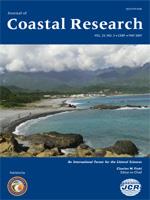The nearshore habitats of western Biscayne Bay, a shallow lagoon adjacent to the city of Miami, are influenced by salinity fluctuations caused by freshwater discharges from canals. Benthic communities in these susceptible littoral habitats have been underrepresented in monitoring programs because of the difficulties associated with boat access. In the present study, we implement a geospatial video-based survey technique, the shallow-water positioning system (SWaPS), to document the abundance and distribution of benthic organisms in these shallow habitats. Mounted on a shallow-draft vessel, SWaPS integrates a global positioning system receiver with a video camera such that each video frame recorded is stamped with position information, date, water depth, heading, and pitch and roll. The georeferenced digital frames collected can be easily analyzed to document patterns of abundance and distribution of submerged aquatic vegetation and other benthic organisms.
The field surveys conducted using SWaPS showed that species distributions are influenced by their respective tolerances to salinity patterns. Seagrass species with relatively high tolerance for low, variable salinity (e.g., Halodule wrightii and Ruppia maritima) tend to have high abundance only in areas influenced directly by canal discharges, while species with relatively limited tolerance for low salinity (e.g., Thalassia testudinum) tend to increase in abundance with increasing distance from the mouths of canals. The use of video-based surveys with high spatial precision facilitates rapid, cost-effective, and repeatable monitoring of shallow marine benthic communities. The most attractive features of this system are (1) the ability to cover large areas rapidly without divers and (2) the ability to return to precise locations without establishing permanent markers (e.g., stakes). Moreover, the georeferenced digital images collected with SWaPS are a valuable permanent visual archive that can provide the baseline information needed to evaluate long-term patterns of change in environments such as western Biscayne Bay that are subject to increasing pressure from human activities.





